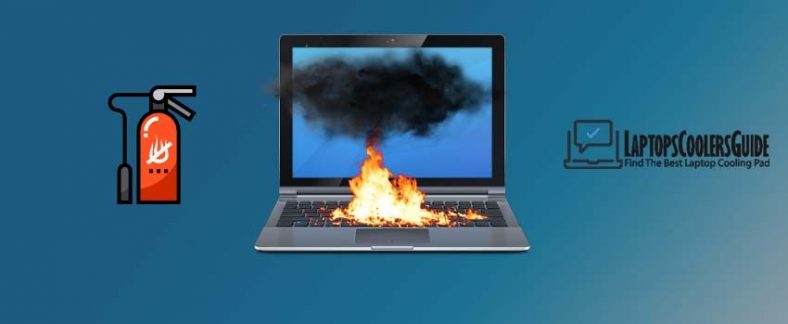Heat poses a great threat to your laptop. It is one of the major causes of system failure in laptops. This is why it is important that you should be able to detect any tell-tale signs if your laptop is overheating so that you can recognize them quickly and fix it before it causes further damage to your laptop.
If too much heat builds up, your laptop may shut down unexpectedly. If your laptop cooling system does not work properly, then it will be difficult to run demanding applications such as games and the hardware components may also be ruined beyond repair.
You must keep in mind that different laptops have different maximum temperature ranges. That is why you should go through the specifications of your laptop model before you start to get concerned so that you know the optimal temperature for your laptop.
There are different ways to detect temperature changes in your laptop. To begin with, there is a built-in system in your laptop that is able to detect radical changes in temperature. You can easily view temperature changes and values in the BIOS or the settings screen of the UEFI. These are used if your laptops operating system freezes or gives you the dreaded blue screen. You can view the temperature values by booting your laptop and then entering the BIOS or the UEFI screen. This feature is not available in all laptop computer systems, so you should not panic if you are unable to access the temperature values however it is generally common in latest laptop computers.
You can also use programs that work to display the temperature of your laptop computer. These work by reading the value calculated by the sensors that are inside your laptop and giving you the value that is stated by them. There is a great variety of programs such as something basic like Speccy which is free to use or something far more advanced such as the SpeedFan which gives you a detailed account of the information provided by the sensors.
Different components have different ideal temperature values so it is important that you are aware of the values that correspond to different hardware. You should know the temperature range of your graphics card and your hard drives.
If you think your laptop computer is overheating give it a test-run by running a heavy application and checking the temperature values reported by the sensors during this. Take note of what component is affected by the application.
You can go to the website CPU World and look for the processor of your laptop. Simply write the name of the brand and sift through the different options until you find your one. Once you find your processor, go to the ‘temperature’ option and find out the optimal temperature.
If the laptop computer feels warm to your touch or if the fan in your laptop seems to be working harder than usual, then this is a sign that your laptop is overheating. If the laptop fan is running for long periods and is creating loud noises such as whirring or clicking or beeping then it is trying to overcome the great amount of heat your laptop may be producing. If your computer is facing difficulty in running basic software actions, then it may be at a risk of overheating, but this can also be a result of issues in the operating system so it’s best to properly determine the cause.
If there are unexpected error warning showing up while running random applications then this is typically a result of overheating. If your video card is overheating, then you may be seeing lines appearing on the screen of your laptop that are generally due to overheating issues.
A laptop can also be overheating due to dust clogging the exhaust vents on your laptop. These are either on the underside or on the side of the laptop. These vents help to emit the hot air produced by the laptop and if there is dust on it then the dust will limit the airflow. It is necessary that these vents are kept dust-free. If the laptop is heating from the underside then this may be the cause and the dust build-up is a sign that your laptop is overheating.
If your laptop is overheating even if the fan is working properly, then you should check thermal interface material (TIM) that is in the middle of the processor and the heatsink. Thermal interface material tends to toughen over time so you should replace this immediately.
If the software you use to monitor the temperature values of your laptop is third-party then you should contact your software vendor and make sure that the software you use for checking the temperature is suitable for your laptop.
Heat is very dangerous for your laptop and can potentially cause permanent damage which is why you should always keep an eye open for warning signs of overheating so that you do not have to suffer later on. Taking care and dealing with overheating problems is important so that your laptop computer works properly.

